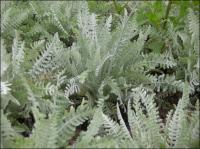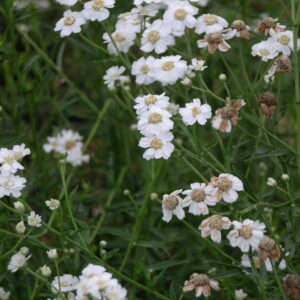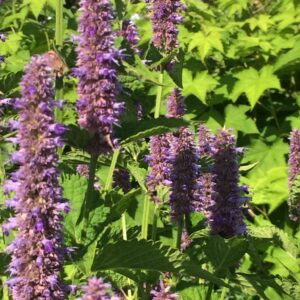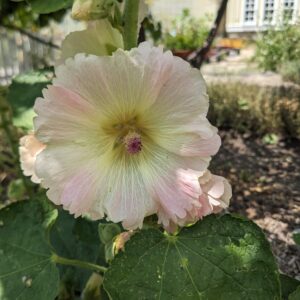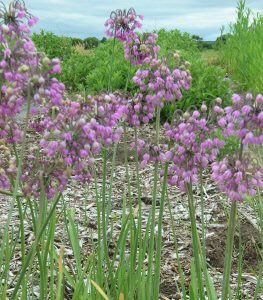Plants for Butterflies and Other Pollinators
Showing 1–8 of 211 results
-
Achillea clypeolata Yarrow Z 3-9
Mustard yellow platters in summer on fern-like, thick clumps of gorgeous, silver dissected foliage.
Mustard yellow platters in summer on fern-like, thick clumps of gorgeous, silver dissected foliage.
Size: 18" x 24"
Care: sun in well-drained to moist well-drained soil.
Native: BalkansAchillea named for Achilles, hero of Homer’s Illiad, who used Achillea millefolium to stop bleeding of his wounded soldiers. Clypeolata means “with a shield.” Described in 1813 in Fl. Graec. Prodr. 2: 193 (1813) giving credit to French botanist Joseph Tournefort (1656-1708.)
-
Achillea filipendulina Fernleaf Yarrow Z 3-10
June-July mustard yellow platters on erect stems. Good dried flowers.
June-July mustard yellow platters on erect stems. Good dried flowers.
Size: 3’-4’ x 30”
Care: Full sun in well-drained to moist-well-drained soil. Heat and drought tolerant
Native: Caucasus, Iran, Afganistan.Achillea named for Achilles, hero of Homer’s Iliad, used Achillea millefolium to stop bleeding of his wounded soldiers at the siege of Troy. Achilles learned about the uses of Achillea from Chiron, the Centaur. Introduced to gardens in 1804 when it was sent from the Caucasus to Europe.
-
Achillea ptarmica ‘The Pearl’ Sneezewort, Shirtbuttons Z 3-9
Spring - summer frilly, white “shirtbuttons”
Spring – summer frilly, white “shirtbuttons”
LIMITED QUANTITES AVAILABLE, LIMIT OF 1 PER CUSTOMER PLEASE.
Size: 12-36”x 24”
Care: Full sun, well-drained to moist well-drained soil.
Native: North temperate regionsPtarmica is Greek for sneeze because this plant used for snuff. English brides carried this at their weddings and called the plant “Seven years’ love.” Cultivated in Europe since the Middle Ages and in the U.S. since the 1700’s. The double form grown in English gardens by 1597. Philip Miller (1768) referred to this as “double Maudlin.” “The Pearl” described in the May 1905 edition of The Garden as “probably giving more satisfaction than any other white-flowered hardy perennial. The Pearl is a pearl indeed.”
-
Adlumia fungosa Allegheny vine, Climbing fumitory, Bleeding heart vine Biennial Z 4-8
Dangling pink to white Bleeding heart-like flowers bloom all summer, June-September. Fern-like foliage on twining stems
OUT OF STOCK
Dangling pink to white Bleeding heart-like flowers bloom all summer, June-September. Fern-like foliage on twining stems
Size: 6-10’ x 12”
Care: part shade to shade in moist to moist well-drained, acidic soil
Native: Nova Scotia to No. Carolina west to Minnesota Wisconsin native status-special concern
Wildlife Value: attracts bumblebees1st described in 1789 (Aiton, Vol. 3 Hortus Kewensis).
-
Agastache foeniculum Anise hyssop Z 4-8
Purplish-blue spikes from July to October, very fragrant.
Purplish-blue spikes from July to October, very fragrant.
Size: 2-3' x 12"
Care: Full sun in well-drained soil, heat and drought tolerant.
Native: North America
Wildlife Value: Skipper butterflies and Rusty patched Bumble Bees love Anise hyssop’s nectar, Deer resistant.The name Agastache is from Greek agan and stachys meaning much like an ear of wheat referring to the shape of the flower spike. Anise hyssop leaves were used by American Americans of the Missouri River region to make tea and as a sweetener in cooking. For Cheyenne it relieved chest pain due to coughing or to a dispirited heart. Listed as an aromatic herb in Bernard McMahon’s 1805 book, American Gardener’s Calendar.
-
Alcea rosea Hollyhock BIENNIAL Z 4-9
Early to late summer spikes of single platters - mixed colors. The classic cottage garden flower.
Early to late summer spikes of single platters – mixed colors. The classic cottage garden flower.
Size: 2-5' x 2'
Care: Sun in well-drained soil.
Native: West Asia
Wildlife Value: Butterfly plant, host for Painted Lady butterfliesHollyhocks have been cultivated in China for thousands of years where it symbolized the passing of time. They cooked the leaves for a vegetable and, also ate the buds. Transported from Middle East to Europe by the Crusaders and introduced to England by 1573. Grown in the Eichstätt Garden, the garden of Johann Konrad von Gemmingen, prince bishop of Eichstätt in Bavaria, c. 1600. Culpepper, a 17th century English herbalist, claimed the plant could be used to cure ailments of the “belly, Stone, Reins, Kidneys, Bladder, Coughs, Shortness of Breath, Wheesing, … the King’s Evil, Kernels, Chin-cough, Wounds, Bruises, Falls. . . (and) Sun-burning.” Both single and double forms grew in England by the time of Parkinson (1629). Parkinson said they came “in many and sundry colours.” John Winthrop Jr. introduced the 1st hollyhock to the New World in the 1630’s. Grown at America’s 1st botanic garden, Elgin Botanic Garden 1811.
In the 1880’s Mr. W. Charter of Saffron Walden in England cultivated frilly doubles, now known as ‘Charter’s Doubles.’
-
Alcea rosea var. nigra Black hollyhock BIENNIAL Z 4-9
Early to late summer spikes of single jet-black/maroon platters.
Early to late summer spikes of single jet-black/maroon platters.
Size: 5-7’ x 24”
Care: sun in well-drained soil
Native: West Asia
Wildlife Value: Attracts bees, butterflies and birdsHollyhocks have been cultivated in China for thousands of years where it symbolized the passing of time. They cooked the leaves for a vegetable and also ate the buds. Transported from Middle East to Europe by the Crusaders and introduced to England by 1573. Grown in the Eichstätt Garden, the garden of Johann Konrad von Gemmingen, prince bishop of Eichstätt in Bavaria, c. 1600. Culpepper, a 17th century English herbalist, claimed the plant could be used to cure ailments of the “belly, Stone, Reins, Kidneys, Bladder, Coughs, Shortness of Breath, Wheesing, … the King’s Evil, Kernels, Chin-cough, Wounds, Bruises, Falls. . . (and) Sun-burning.” Both single and double forms grew in England by the time of Parkinson (1629). Parkinson said they came “in many and sundry colours.” John Winthrop Jr. introduced the 1st hollyhock to the New World in the 1630’s.
Thomas Jefferson grew this black variety at Monticello.
-
Allium cernuum Nodding onion, Prairie onion Z 4-8
Umbels of arching stems with nodding bells of lilac shading to pink or occasionally white. May to June.
Umbels of arching stems with nodding bells of lilac shading to pink or occasionally white. May to June.
We are very sorry, but due to state agricultural restrictions, we are not permitted to ship Allium bulbs to Idaho, or to the following five counties in the State of Washington: Adams, Benton, Franklin, Grant and Klickitat.
Size: 12”-18”x 3-6”
Care: sun to part shade in moist well-drained soil
Native: Canada to Mexico
Wildlife Value: nectar source for Hairstreak butterfly, Attracts hummingbirds. Alliums resist critters including deer, rabbits, squirrels, mice, and moles and voles. They cannot stand the onion-like smell of Alliums protecting near-by plants too.Cernuum is Latin meaning “nodding.” Many groups of 1st Americans ate the bulbs raw, roasted or dried for winter storage or as flavoring for soups and gravies. Cherokee used this plant medicinally to cure colds, hives, colic, “gravel & dropsy,” liver ailments, sore throats, “phthisic,” and feet in “nervous fever.” Those in the Isleta Pueblo were not quite as creative as the Cherokee and used this only for sore throats and infections. Meriwether Lewis collected this in Montana and wrote, “I met with great quantities of a small onion about the size of a musquit ball … They were crisp, white and well-flavoured. I gathered about a half a bushel of them before the crew arrivd.” Chicago is believed to be named for the Algonquin word for this plant chigagou.

